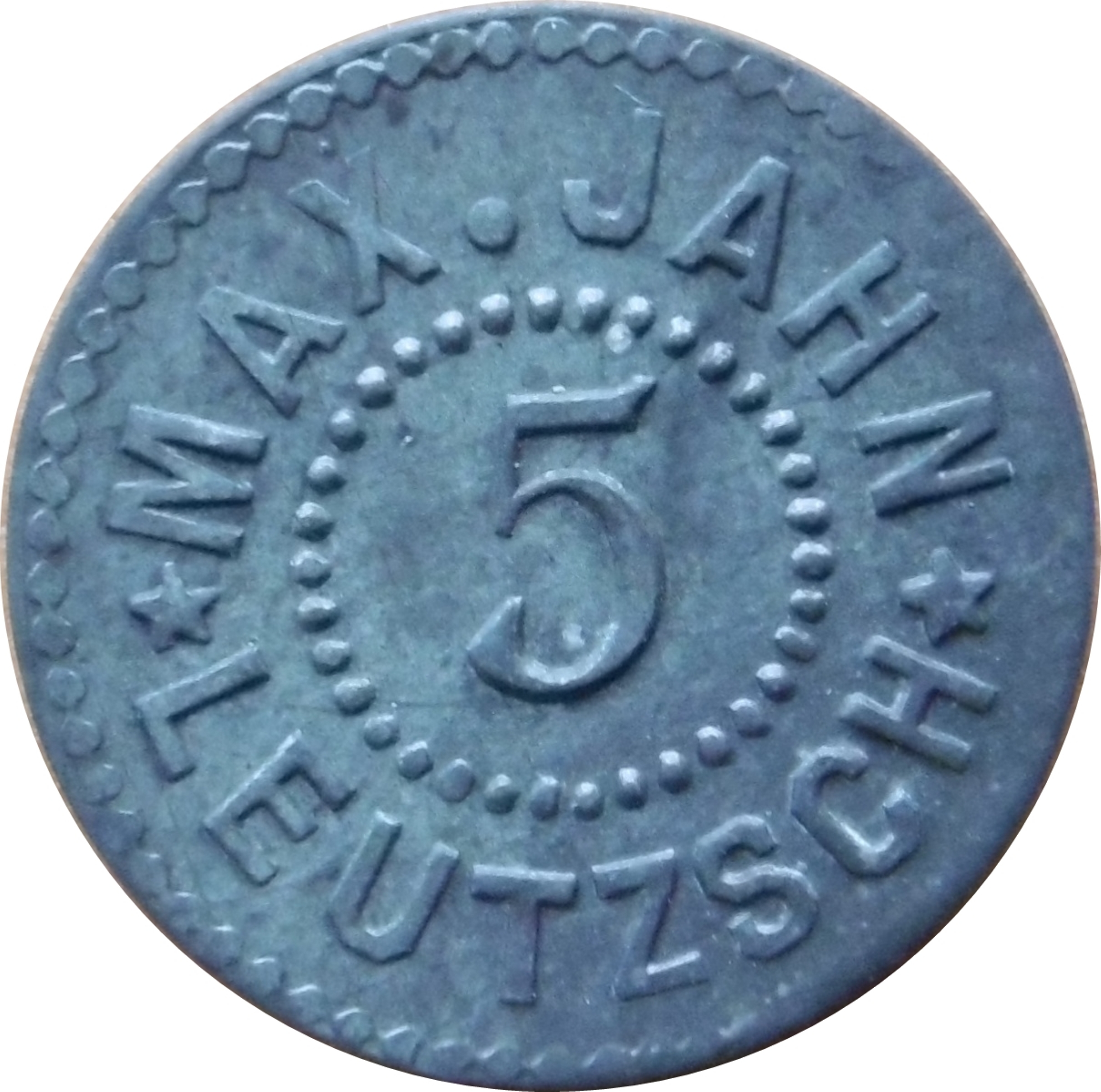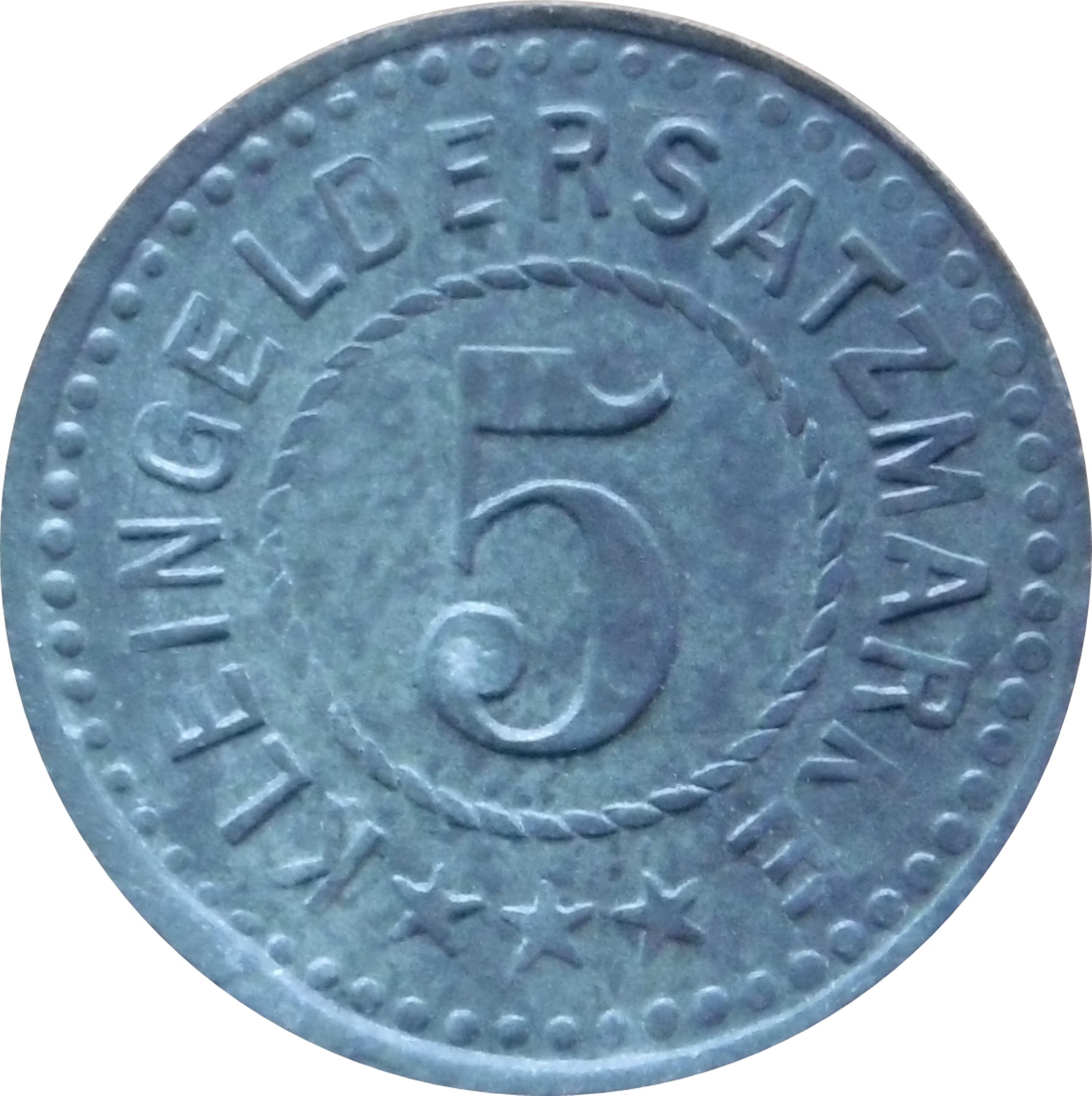German notgeld 5 Pfennigs - Leutzsch (Max. Jahn)
Introduction
The German Notgeld 5 Pfennigs coin, minted in Leutzsch by Max. Jahn, holds a special place in numismatic history. This zinc coin, with its distinct obverse and reverse designs, offers collectors a glimpse into a fascinating period of German currency.
Historical Background
Issued during a time of economic turmoil, German Notgeld coins served as emergency currency in localities across Germany. The Leutzsch mint, under the direction of Max. Jahn, produced these coins to address the shortage of official currency during the early 20th century.
Coin Images
 Obverse
Obverse
 Reverse
Reverse
Design Features
The obverse of the 5 Pfennigs coin showcases a pearl rim surrounding a beaded circle. The legend surrounds the central denomination, creating a visually appealing composition. On the reverse, a similar design with a pearl rim and legend framing the denomination offers a cohesive aesthetic.
Technical Specifications
This coin, weighing 1.40g and measuring 17.80mm in diameter, is crafted from zinc. The choice of material and precise dimensions reflect the practical considerations of producing emergency currency efficiently.
Collectible Value
German Notgeld coins, including the 5 Pfennigs from Leutzsch, are highly sought after by collectors for their historical significance and unique designs. The scarcity of these coins contributes to their collectible value, making them prized additions to numismatic collections.
Conclusion
In conclusion, the German Notgeld 5 Pfennigs coin from Leutzsch, minted by Max. Jahn, represents a fascinating piece of numismatic history. Its intricate designs, historical context, and collectible value make it a must-have for both seasoned collectors and enthusiasts interested in delving into the world of emergency coinage. By following this structured approach, you can create a comprehensive and engaging article that caters to both numismatic experts and general readers interested in learning about the German Notgeld 5 Pfennigs coin.

